Reverend John Corbley (1733-1803)
Introduction
Text-to-speech Audio
Images
Pennsylvania historic marker, with John Corbly Memorial Baptist Church in the background
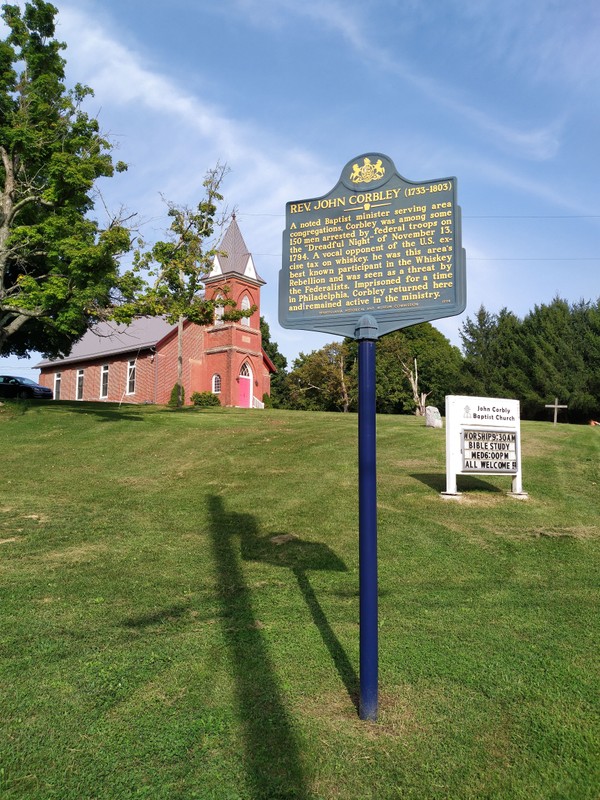
Daughters of the American Revolution tablet to Garard's Fort to
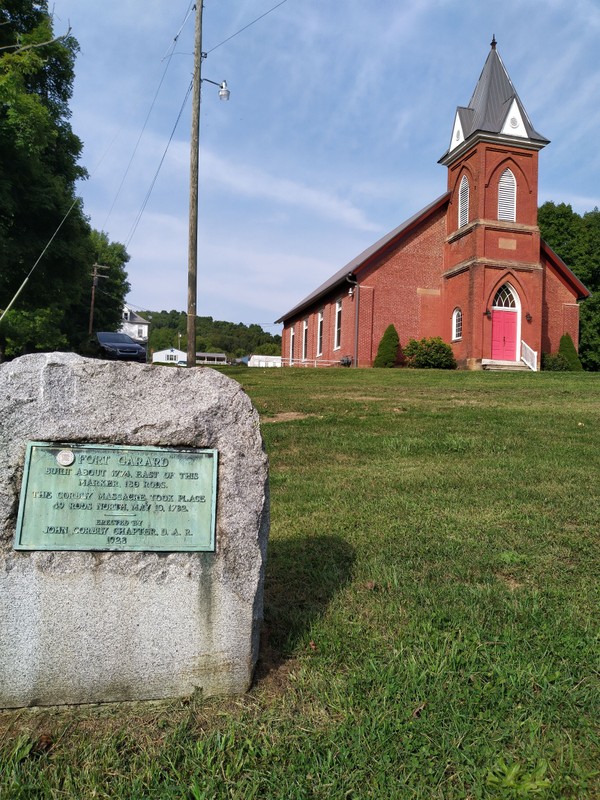
Memorial to John Corbly and family in the Garard's Fort Cemetary
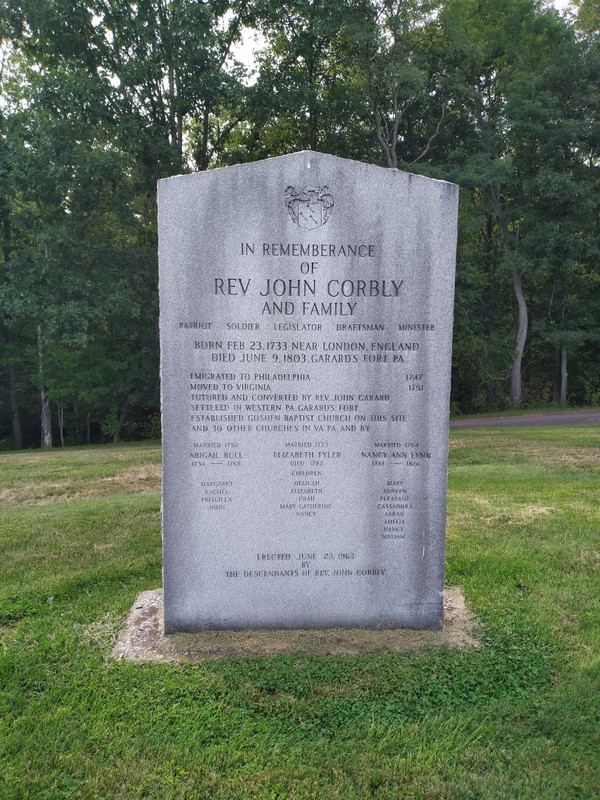
Memorial to the Corbly Family Massacre in the Garard's Fort Cemetery
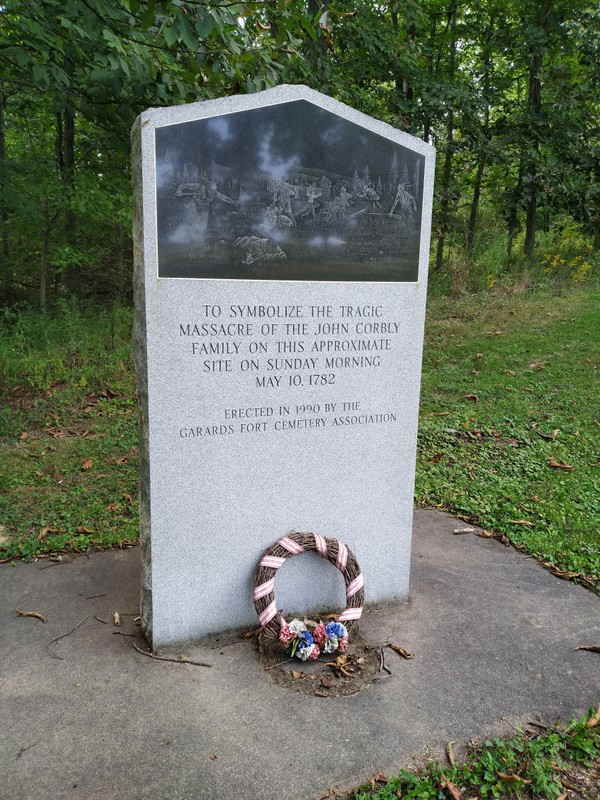
The grave of John Corbley (center) with his second and third wives beside him to the left and right
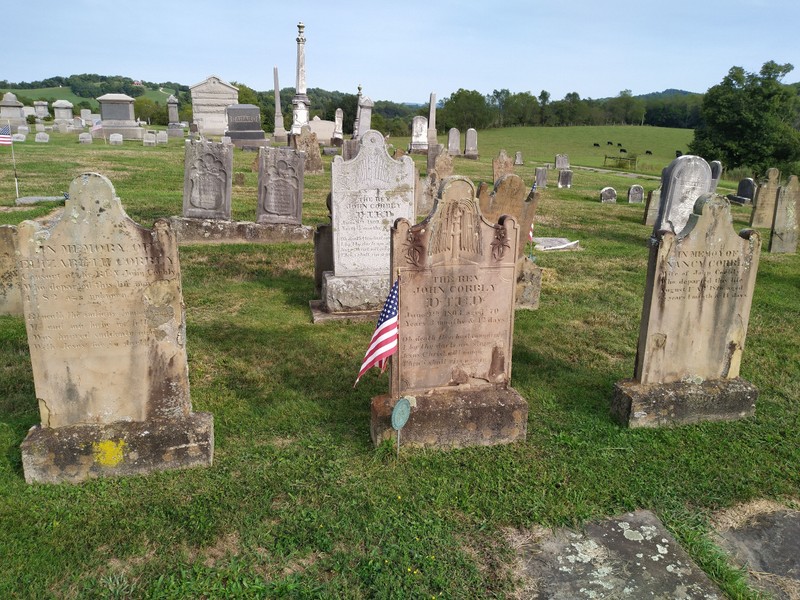
Slave Gallant, Corbly's home named for a town in Ireland, stands one mile north of Garrard's Fort along Carmichael Road
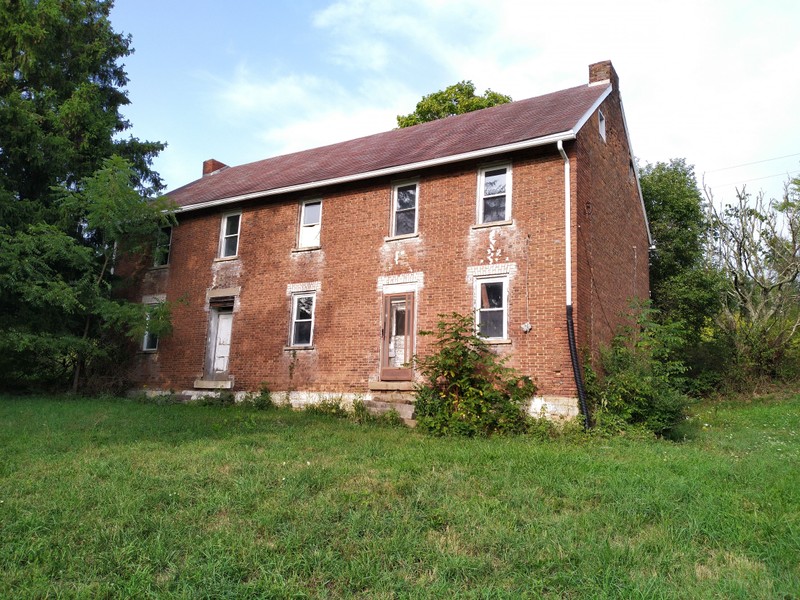
Backstory and Context
Text-to-speech Audio
Born in Ireland in 1773, John Corbley (now spelled Corbly by his descendents) immigrated to Berks County, Pennsylvania at age fourteen as an indentured servant. Working of his passage to the New World for four years, Corbley moved to Virginia once his term of service was completed. There he married Abigail Bull of Winchester, and together they had four children.
While in Virginia, Corbley joined the Baptist faith, which powerfully shaped his life. He was converted by Elder John Garard, and Corbley's faith was so zealous that he was licensed to minister himself. Although a rising star within the Baptist community, Virginia's Anglican-dominated society looked upon Corbley's preaching with less pleasure. In 1768, he was imprisoned in Culpeper, Virginia as a "disturber of the peace."[2] Rather than abandon his faith, however, Corbley literally preached to crowds from the windows of the Culpeper Jail. He was eventually acquitted of the charges. The trying year continued, however, when his wife Abigail passed away.
Perhaps seeking a fresh start, Corbley moved to southwestern Pennsylvania sometime around 1768. One of the first Baptist ministers in the region, Corbley founded Goshen Baptist Church (now John Corbly Memorial Church). Around 1773, he remarried to Elizabeth Tyler and acquired a small farm a mile from Fort Garard. More settlers arrived in the vicinity, and Garard's Fort developed into a tidy frontier community. Corbley spent much of his time ministering to small frontier communities in western Pennsylvania and northwestern Virginia, helping establish dozens more congregations and churches. Around 1776, in a sign of Corbley's growing prominence, he was elected to the Virginia House of Delegates, but at the time there was a belief that ministers should not hold elected office, and Corbley was prevented from taking his seat.
During the 1770s, John Corbley and Garard's Fort weathered a series of desperate conflicts with local Native American tribes (notably the Shawnee, Mingo, and Delaware) who sought to stymie the flow of white settlers westward. In 1774, during Lord Dunmore's War, Fort Garard was attacked by Mingo leader Logan, and seven settlers were killed and two children taken into captivity. Virginia militia ultimately defeated the Indians at the Battle of Point Pleasant in October 1774.
Less than a year after the Battle of Point Pleasant, American colonists found themselves at war with their mother country Great Britain. On the Pennsylvania frontier, the great threat was not British soldiers but rather fear of Loyalists (American supporters of the Crown) and Native Americans. Greene County contained dozens of Loyalists, who apparently formed a secret society to seize control of the region. John Corbley supported the Revolution and assisted in the arrest of suspected Tories. He was a source of leadership and religious guidance throughout the war.
On May 10, 1782, disaster struck John Corbley and his frontier community. It was a Sunday, and John Corbley was headed with his family from his farm to the Baptist Church a mile away. Realizing he forgot his Bible, he returned home to retrieve it and made his way to the church behind his family. Reading his Bible as he walked, a Native American party ambushed his family ahead of him. He ran forward, but soon realized he was outnumbered and unarmed. Corbley was forced to flee while his family was massacred. His wife was slain, and their infant child likewise scalped and killed. The six year old son was also killed. Although Corbley's daughters Elizabeth and Delilah were scalped, they survived. (The wound eventually killed Elizabeth at age 24; Delilah lived to age 64.) John Corbley's son John Corbley, Jr. also survived the attack; accompanied by his dog that morning, the dog attacked the Indians and gave John, Jr. the time needed to flee. Armed settlers chased the attackers to the Ohio River, but they were never caught. The Corbley Massacre stands as one of the worst frontier attacks during the Revolution, and a monument to the massacre stands in the Corbley Church cemetery.
In the early 1790s, John Corbley became swept up in an angry political wave that ultimately culminated the 1794 Whiskey Rebellion. Western Pennsylvania farmers had grown frustrated with the Federal government. In 1791, the Federal government placed an excise tax on whiskey. Western Pennsylvania farmers routinely converted their corn crops into the lucrative alcohol, which could be easily transported over the mountains. The tax seemed to penalize poor frontier farmers, and despite petitions and mob violence, the tax was not repealed. These economic frustrations also combined with the government's seeming inability to protect the frontier from Native attacks.
In the summer of 1794, the grievances boiled over into violence when a local tax collector issued a court summons to a broke farmer. Local militia mobilized and skirmished with a few local officials. In August, 7,000 regional militia gathered and marched on Pittsburgh in a relatively peaceful but rebellious show of force. President George Washington raised 12,000 troops to quash the revolt, and the Whiskey Rebels melted away rather than fight. Throughout the rebellion, John Corbley proved a vocal supporter of Pennsylvania farmers; unsurprising, given his long-established place within the frontier community. He was arrested for his outspoken sentiments, and along with eighteen prisoners, marched to Philadelphia where they were paraded captive in front of 20,000 onlookers. Corbley was ultimately acquitted and returned home.
In 1803, John Corbley passed away. A devout Baptist and pillar of the Pennsylvania frontier community, Corbley played a central role in local Pennsylvania history and his life sheds much on the history and culture of early America. There are several historical markers in Garard's Fort that speak to John Corbley's role in regional history. In front of the John Corbly Baptist Church (to which this Clio entry is paired) stands a 1994 Pennsylvania state historical marker which acknowledge's Corbley's role in the Whiskey Rebellion. Immediately behind it is small stone marker placed by the Daughters of the American Revolution which commemorates Garard's Fort role in the Revolution. Down the road is the Garard's Fort Cemetery, where two granite markers commemorate both John Corbley himself and the Corbley Family Massacre. Finally, one mile north of Garard's Fort stands Slave Gallant, John Corbley's brick home (unfortunately, it is in some disrepair).
The many monuments to John Corbley speak to his powerful role in shaping southwestern Pennsylvania history in the colonial, Revolutionary, and early Republic eras.
Cite This Entry
Long , Morgan , Zachery Cowsert, and Clio Admin. "Reverend John Corbley (1733-1803)." Clio: Your Guide to History. April 8, 2021. Accessed April 1, 2025. https://theclio.com/tour/1571/3
Sources
1. Mary Sammons Parry. "Greene County Forts and Block-Houses." Daughters of the American Revolution Magazine. Vol. 59, No. 4 (April, 1925): 234-236. Digitized. https://services.dar.org/members/magazine_archive/download/?file=DARMAG_1925_04.pdf
2. Nannie L. Fordyce. The Life and Times of Reverend John Corbly, and the John Corbly Family Genealogy. Washington, PA: Nannie Fordyce, 1953.
3. Jerry Clouse. "The Whiskey Boys Versus the Watermelon Army." Pennsylvania Heritage Magazine. Spring 1991. Digitized. http://paheritage.wpengine.com/article/whiskey-boys-versus-watermelon-army/
4. Mike Jones. "Whiskey Rebellion's history stretches into Greene County." June 15, 2018. Observer-Reporter [Washington, PA]. Web. Accessed September 16, 2020. https://observer-reporter.com/publications/greenecoliving/whiskey-rebellion-s-history-stretches-into-greene-county/article_f45e4364-57a5-11e8-b6c2-774f528c0a95.html
5. "John Corbly Farm." National Register of Historic Place Nomination Form. National Park Service, U.S. Dept. of the Interior. 1984. Digitized. https://gis.penndot.gov/CRGISAttachments/SiteResource/H083510_01H.pdf

